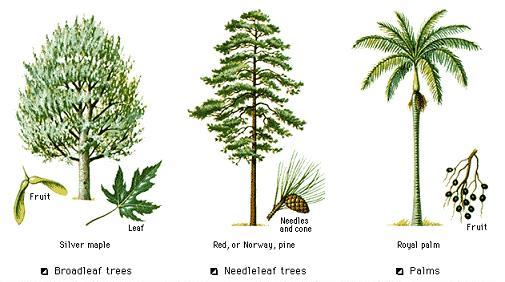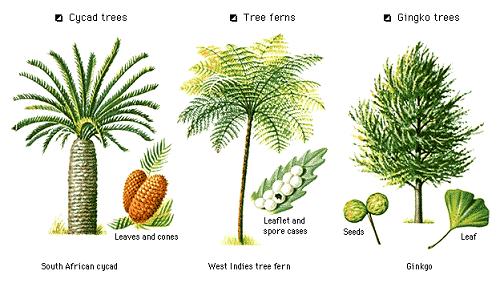
 |
|
|
|---|
| Palm, pandanus, and lily trees belong to the large group of flowering plants called monocotyledons. These trees grow mainly in warm climates. Of the three types of trees in this group, palms are the most important. There are about 2,500 kinds of palm trees. They range from the coconut palms of tropical islands to the date palms of desert oases. Most palm trees have no branches. The trunk has a crown of enormous leaves. The leaves are either feather-shaped or fan-shaped. |

|
|---|
The yucca trees of Mexico and the far Southern United States are lily trees. The best-known yucca is the colorful Joshua tree found in the deserts of the Southwestern United States.


Cycad trees look much like palm trees. They have a trunk without branches and a crown of long, feathery leaves. But cycads are more closely related to pine trees than to palms. They produce seeds in cones that look like large pine cones. Millions of years ago, cycads grew in nearly every part of the world. Today, they grow mainly in a few warm, moist sections of Africa, Asia, and Central America.
 |
|---|
Tree ferns. Ferns are best known as rather short plants with feathery, green fronds (leaves). But in the tropics and some areas with mild climates, many relatives of these plants are trees. Tree ferns look much like palm trees, but they belong to a different group of plants. Tree ferns do not have flowers or cones and so do not reproduce by seeds. They reproduce by means of tiny bodies called spores, which develop on the undersides of their fronds.
Ginkgo trees are an extremely old species of tree. Millions of years ago, various kinds of ginkgoes existed. Only one species survives today. The ginkgo, like needleleaf trees, is a gymnosperm. But unlike other gymnosperm trees, the ginkgo has fan-shaped leaves. These leaves look like the fronds of a fern called the maidenhair. Ginkgoes are sometimes called maidenhair trees. They are natives of Asia, but many are grown in the United States and Europe.
Fossil trees. About 300 million years ago, there were whole forests of trees unlike most of the trees that grow today. Huge club-moss trees and horsetail trees grew along with tree ferns in steaming hot swamps. Over millions of years, the trees and other plant life in the swamps died, became buried, and turned into coal. In other places, buried forests became petrified (turned into stone). Coal deposits and petrified forests contain fossils of many trees that died out more than 100 million years ago (see FOSSIL). Two of these extinct trees are the club moss tree and horsetail tree of the coal-forming swamps. The club mosses and horsetails living today are herbs. |
|---|
Contributor: Richard H. Waring, Ph.D., Professor Emeritus of Forest Ecology, Oregon State University. |
|
||||||||||||
|---|---|---|---|---|---|---|---|---|---|---|---|---|
|
|
||||||||||||